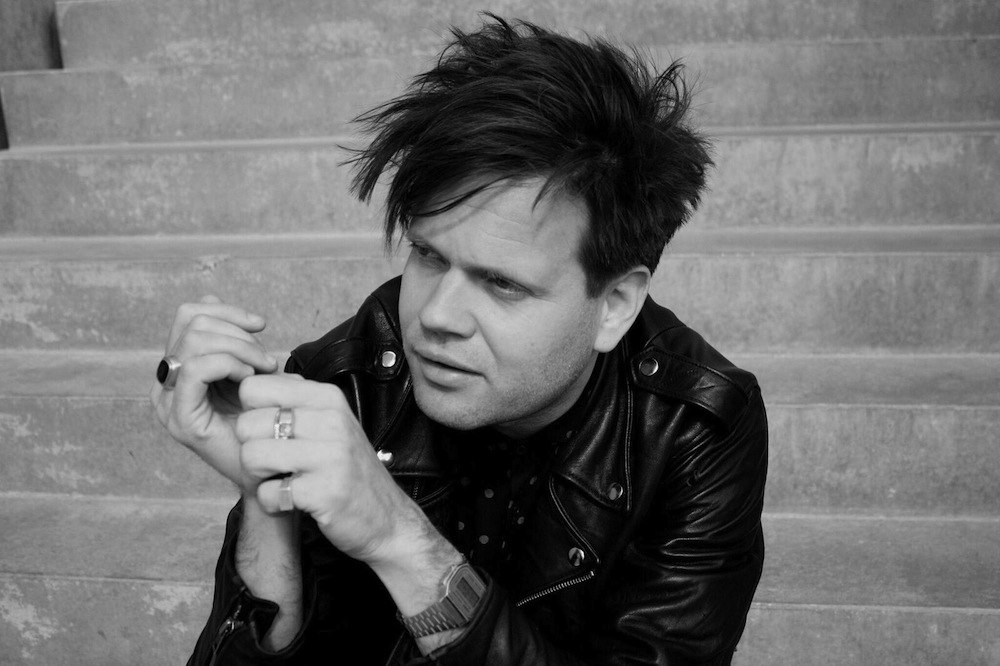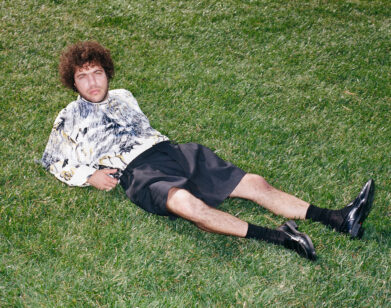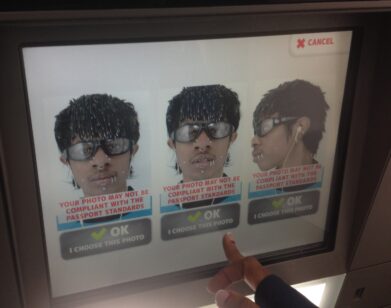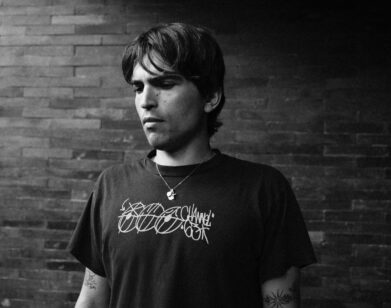A Decade of Trentemöller

ABOVE: TRENTEMØLLER. PHOTO COURTESY OF SOFIE NØRREGAARD.
Trentemøller has always defied definition. Ten years have passed since the Danish electronic musician (born Anders Trentemøller) marked his arrival with The Last Resort, his debut full-length album of pulsating post-punk tracks. Unlike almost anything else on the electronic music landscape at the time, Resort was a confident breakthrough showcasing an impressive and experimental sonic talent—a bracingly melancholic opus that still proved accessible, soft, and even sexy around its edges.
It’s that talent and ambition that has since taken Trentemøller to the world’s largest festivals and into the ranks of several “best-of” shortlists for Resort and its follow-up studio releases: Into the Great Wide Yonder (2010) and Lost (2013). Each LP slightly reinvented what came before it, and Fixion (In My Room), which Trentemøller released today, is no exception. It follows in its predecessors’ footsteps in that its dozen songs are divided between instrumental tracks and vocal assists—with brooding electronic production and minimal pop influences throughout—but it builds upon a thematic and melodic web of intricacies previously unseen.
Trentemøller spoke with Interview via Skype from his Copenhagen studio ahead of Fixion‘s release. He detailed his time spent in the studio, why this album all began at the piano, and what it was like collaborating with singers such as Jehnny Beth of Savages.
BENJAMIN LINDSAY: What’s your favorite thing about being on the road?
TRENTEMØLLER: It is something that I really love because it is such a big contrast from me being alone in my studio for one and a half years just doing everything myself. I’m really looking forward to trying to transform my ideas from the studio to the band, and tell the band my reason for the album, and begin to know and find the versions that will also fit the band. It’s not always possible to play a song exactly as it is on the album. That’s also something that I really don’t want to do because I like to have versions that also adapt to the band, so that is always a big challenge to see how we can transform those songs so it feels natural. And then, of course, going on tour and playing the songs for the people and seeing how the songs actually change quite a lot from the first shows that we are doing to the last shows. It’s really strange that they slowly change little by little after each show. It’s fun to see how they end up sounding at the end of the tour.
LINDSAY: So the band doesn’t come into the picture until you’re prepping for a live show? The recording of the album is all just you?
TRENTEMØLLER: Yes, I must admit I’m a total control freak. That is the way that it works best for me. Also, I think that the creative process, especially in the beginning of making an album, I’m feeling very fragile, so to speak, because you are trying out so many different ideas, and if you are listening to it from the outside, it would sound horrible! There are some ideas that I know I have to try out before I find the right sound, before I find the right melody. So I really like to be alone. It’s nearly like being naked in the studio, and if someone were to walk in, that wouldn’t feel good.
LINDSAY: Do you have a process or a habit in how you start a song?
TRENTEMØLLER: This time I actually started a little bit differently than I did on the last album because I wrote most of the songs at my upright piano, which is also in the studio. I really wanted to use time to write strong melodies, because then it’s much easier for me to take those melodies and ideas into the studio—if the melodies are strong, it’s much easier to see which way I can take them sound-wise. And then I also found out a very good trick was that instead of recording my ideas, if I was writing a song one night, I would leave the studio and come back the next day, and if I could remember the same melody on the same song, it was definitely something worth working more on. If I couldn’t remember it, maybe there was a purpose about that.
LINDSAY: That’s interesting, because looking at some of your past work, with a lot of the releases you kind of breathe new life into them. You remix them and there’s re-releases, and there are various life forms within the crux of these songs. When you’re first sitting down and writing, are you imagining the different ways these could be interpreted, or are those remixes only done in hindsight when you go back and explore them?
TRENTEMØLLER: It’s actually funny that you mention that, because that is what is happening quite often for me. Even if I have a quite strong melody, there are so many possibilities and so many directions that you can take the music. Sometimes, I actually end up doing three or four different versions of one song, and sometimes, those versions can be done very differently. They can be very laid back, downtempo, or sometimes the same song can be quite uptempo. But it is always the same melody and chord progressions. But also, because I’m in a modern studio, there are so many possibilities—you can do so much. So it’s sometimes a little bit confusing for me to actually see which way should I choose. … It’s also about knowing when to say stop. It’s very easy to overproduce stuff and you can forget those first spontaneous ideas are often the best ideas.
LINDSAY: With this release in particular, how did you go about choosing artists and singers to work with?
TRENTEMØLLER: It’s pretty much the songs I write that dictate what vibe it should be and what singers it should be. Half of the album is still instrumental, and that’s very important for me to have that aspect in my albums because I really love the fact that instrumental music can have you do your own inner-movies or your own visuals to the sound. There’s not lyrics dictating what you should feel. But my idea in the beginning was to actually only have one vocalist on the album, to kind of take you by the hand and lead you through this album. That was Marie Fiskus singing on four of the songs. But then I was asked to mix the new Savages album, and I met Jehnny Beth, and we really had a great time working together. Jehnny also joined us on one of our shows when we played in Europe. So we talked about doing something together, and then I ended up sitting at the piano one day and writing this really uptempo bass line, and I thought this could work quite well with Jehnny Beth because it had this kind of punk-y attitude to it. She came to my studio and we did “River in Me” and the other track, “Complicated,” in two days. That was a very special thing for me because normally, I’m working with my vocalists when we send parts to each other. Sometimes we actually never meet face to face.
LINDSAY: You released the music video to “Redefine” a few days ago. Is there a story behind that?
TRENTEMØLLER: It’s [directed by] this Swedish guy, Andreas Emenius. He’s also doing the cover artwork for me and building the stage design that I bring with me when we’re playing live. I basically gave him total freedom to do whatever the music was telling him, so when he came up with the idea of getting naked in the supermarket I was like, “OK, that’s a different story!” But I actually really like this kind of youth energy that I think the track has—uplifting drums and not as dark and melancholy as some of my other stuff.
LINDSAY: There’s such variety of sounds and genres on Fixion. What overall atmosphere or narrative were you aiming to create?
TRENTEMØLLER: For every album, I really try to make an album that you hopefully will listen to from the first track to the last track. I personally really like if there’s a—maybe not a story, but there’s a natural flow. I didn’t want it to be too heavy and too dark because that kind of gets boring, and if it starts like that, you hear those albums and know what to expect. I like to surprise the listener a little bit and also surprise myself when I write the music. So we’re definitely thinking about some climaxes in the whole album structure. I was actually doing some drawings, doing curves trying to find out what is the middle point of the album? What could be a great starting song? How should it end? Should it maybe go up a little bit in intensity before the end? So hopefully when you’re listening to the album, it still feels quite natural, even though there are some big differences.
LINDSAY: Do you have any non-music related ventures you’d like to tackle in the future?
TRENTEMØLLER: I’m very much thinking in music most of the time, but I really would love to start filming because when I was a teenager, that was my big hobby and it was always fun for me to explore that world. Maybe one day I’ll be able to put on the visuals to my music myself. Even if I don’t think in visuals about the music while I’m doing it, after the music is finished, it could be great to incorporate that in the live show or doing my own music videos. I’ve been thinking about buying a video camera to see if I could come up with something.
FIXION (IN MY ROOM) IS OUT NOW. TRENTEMØLLER’S RECORD RELEASE SHOW WILL TAKE PLACE IN NEW YORK ON SEPTEMBER 26, 2016 AT (LE) POISSON ROUGE. FOR MORE INFORMATION ON TRENTEMØLLER, VISIT HIS WEBSITE.






